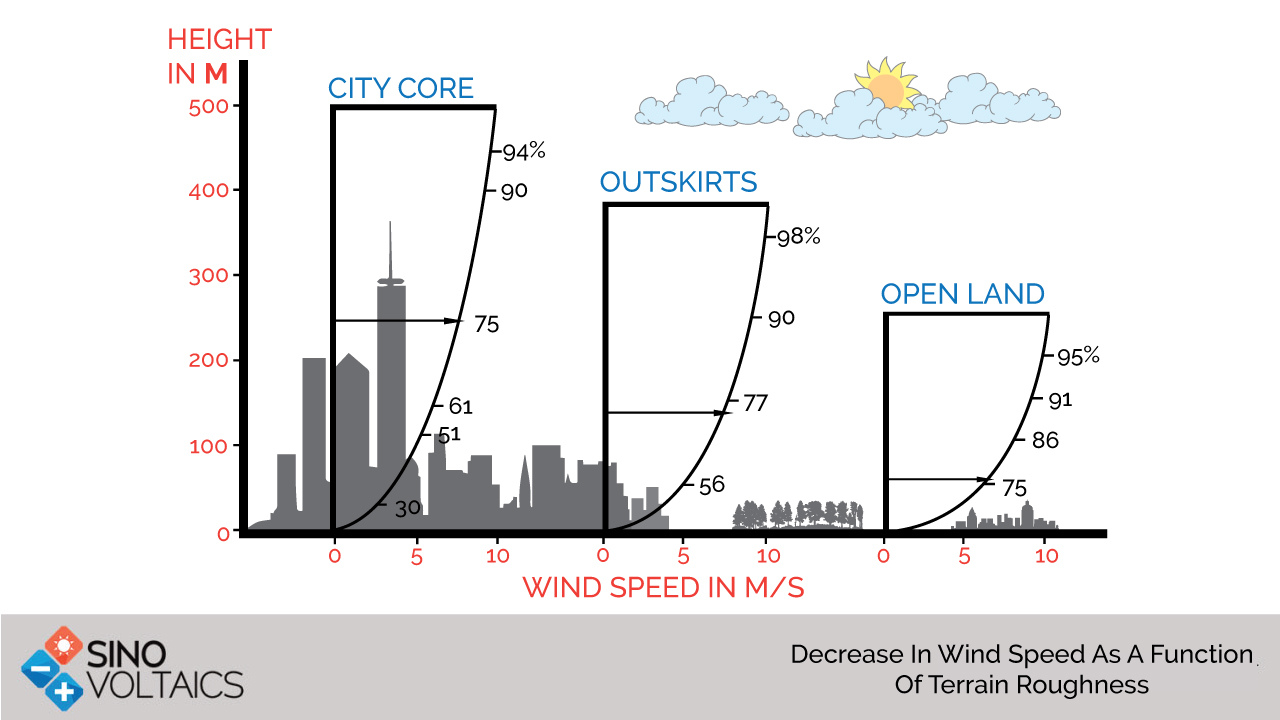Albedo
Bypass Diodes
Solar Glazing
Single Phase Versus Three Phase Power Supply
Three phase power supply
Single Phase Power Supply
Module Measurement without Load
Module Measurement with Load
[...]
 As is clear from the figure above that the more pronounced the roughness of earth’s surface, the more the wind will be slowed down and hence less power. A high roughness class of 3-4 refers to landscapes that have many obstacles like trees and skyscraper buildings while a roughness class of zero means sea surfaces and oceans that have zero obstructions hence roughness class of zero.
As is clear from the figure above that the more pronounced the roughness of earth’s surface, the more the wind will be slowed down and hence less power. A high roughness class of 3-4 refers to landscapes that have many obstacles like trees and skyscraper buildings while a roughness class of zero means sea surfaces and oceans that have zero obstructions hence roughness class of zero.